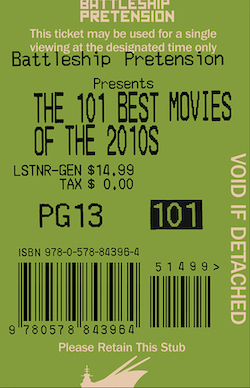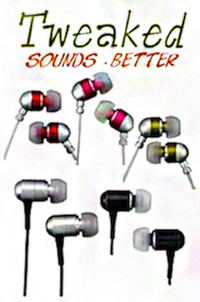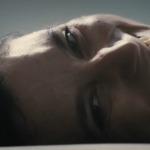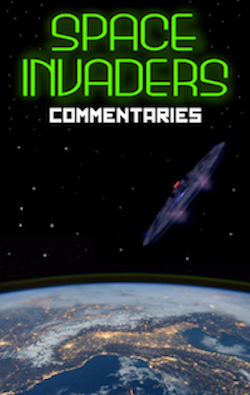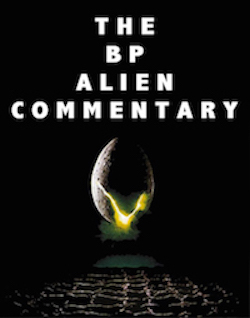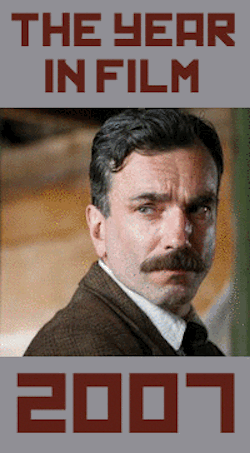Home Video Hovel: Pioneers of African-American Cinema, by Scott Nye
The more you see, the less you know. Film history, like any history, is far more diverse than the agreed-upon narrative built around chance, luck, sweat, and the tastes of a majority audience. And even if you manage to burrow into those lesser-known histories, the details within those are far from simple. Case in point – the new Kino Classics 5-disc Blu-ray box set Pioneers of African-American Cinema. Collecting over twenty hours of cinema by a dozen filmmakers across a thirty-year timespan (1915-1946), one quickly realizes that there is no central thematic, aesthetic, or tonal definition of “African-American Cinema.” They are pioneers simply for having worked in an art form chiefly controlled by an industry that did not want them. Within this handsome slipcase are one-reel comedies, melodramas, mystery adventures, religious works, home movies, and, I’ve no doubt, a good deal more. What with the twenty hours and such, this is a collection not necessarily meant for quick consumption, but at this point, with five of its features and a number of its shorts under my belt, it’s easy to see this is one of the essential home video releases of the year.
In the interest of full disclosure, I should first say that I contributed to the Kickstarter campaign that made this set possible, at a level sufficient enough to warrant my name in its booklet and a copy at my doorstep. I don’t benefit in any way from its success, nor am I uncritical about the work therein. It is safe to say I was enthusiastic about this release from the time the campaign was launched, but no more so than I am for any number of home video releases, nor indeed for any number of films.
First, a practical overview might be helpful of what constitutes “African-American Cinema” in Kino’s terms. As I said, there are no unifying themes at play here, but there is a unified approach to production. That is to say, these are black films top to bottom – made by black filmmakers, starring black actors, for black production companies, distributed to black audiences. It becomes evident right off the bat that the language, references, and behavior are specifically aimed at a bygone era, with little effort to try to “cross over” to any other audience, least of all white. These are, necessarily, low-budget affairs, sometimes employing non-professional actors, often made in community spaces. Even those that seem like big commercial plays had to deal with limitations – Richard E. Norman’s The Flying Ace from 1926 isn’t able to get its pilots into the air, and is more a murder mystery than the adventure its title and poster might suggest. Others weren’t even shown commercially, but were produced to illustrate church sermons. It’s quite remarkable many of them have survived at all.
Given that, the image and (for the later features) sound quality is all over the place. For some of the sound films, they even recommend turning on the subtitle tracks as it would be too difficult to understand otherwise. Some films like The Flying Ace and Body and Soul look very, very good, allowing for the usual traces of damage the accompany films of their time. Others, like Mercy, the Mummy Mumbled are considerably warped, forcing the viewer to strain to comprehend the action within. Most land somewhere in the middle, with missing frames and scratched sections and faded color palettes. Eight come only as fragments or excerpts, a reminder of how difficult preservation is for even well-funded films, let alone independent ventures from the early days of cinema when such archival efforts were virtually nonexistent. Kino has done remarkable work in collaboration with the Library of Congress restoring everything in the set, but sometimes there’s only so much there to restore. The silent films all come with new scores by a variety of artists, not all of which make the usual attempt to keep them in the style of the times. Whether these more modern efforts are effective is up to the individual viewer, but I found them mostly invigorating, though some sections of DJ Spooky’s score for Body and Soul retreated to the same ho-hum theme during moments of intense melodrama that could use underlining. Better, in my opinion, was Dr. Samuel Waymon’s minimalist stylings on Hell-Bound Train, an evangelical drama about the many sins that will guarantee one passage on such an engine.
I doubt many serious cinephiles would question the archival value of the release. They may yet question its artistic or dramatic value. What this set doesn’t promise is “Masterpieces of African-American Cinema” or even “The Essential African-American Cinema”, though there is much of both categories on view. I don’t want to make excuses for the work and say it’s a “journey” through a difficult era of filmmaking. Much of what I’ve seen, like Symbol of the Unconquered: A Story of the Ku Klux Klan or Body and Soul, more than speaks for itself. These are vital, exciting works of cinema that don’t simply “transcend” their limitations but actively work within them to craft something that money can’t buy. These films are immediate and electrifying expressly because they are more directly engaged with the real – real places and people and faces and forms of expression and ways of thinking about the world that just couldn’t be found in white cinema. When Hugh (Walker Thompson) is stuck trying to defend his property in Symbol of the Unconquered, we can tell immediately how cut-off that property truly is, how few resources he has. When Isabelle retreats to the city in Body and Soul, it’s not a studio backlot, but a real early-20th-century neighborhood with all the poverty that comes with it.
Films like The Flying Ace or the short Hot Biskits – about a seemingly-important game of mini-golf that never quite communicates the stakes or builds suspense around its outcome – suffer a bit in an attempt to bridge the gap of resources. The Flying Ace has so little to do with flying that its title feels somewhat like a misdirect, and the few instances in which it almost becomes the movie you think it will be are deeply compromised (the actors sit in unmoving cockpits against bland backdrops while wind machines go to town; it being a silent film, there isn’t even a sound design scheme to assist). That the story is actually a rather thrilling mystery/suspense thriller makes these elements all the more distracting, even if it does allow for the climax to be truly climactic.
And then there’s stuff like Hell-Bound Train or The Blood of Jesus, religious works that are so thrilling in their passion and fervor for the faith that ordinary considerations of drama would be misplaced if applied. Hell-Bound Train is almost laughable for its campaign against jazz, drink, and dance, but the mostly-handheld camerawork and aggressive cutting creates a dizzying, dazzling experience as explosive as the finest sermons. The Blood of Jesus, which lingers on singing parishioners as they march down empty dirt roads and sits at the edge of a woman believed to be dying, has only the heights of Dreyer as its peer in drawing out the transcendent experience of feeling near to the divine. The deathbed and the doubting companion instantly recalls Ordet, but it is director Spencer Williams’ patience, his willingness to linger on both the ordinary and divine, that marks this film as something really exceptional. This is a synched-sound film, drawing music from gospel hymns, the performance of which is credited to Reverend R.L. Robertson and the Heavenly Choir, which more than lives up to its name. The surrealist imagery combined with the choir makes for awe-inspiring cinema.
This is but a fraction of the work made available in this stunning compilation, which is housed in a lovely slipcase with an 80-page booklet filled with essays, a film guide, and a thank-you page for the sponsors who made it possible. The set comes in both Blu-ray and DVD editions, but the Blu-ray includes four films or fragments thereof that the DVD does not, so keep that in mind when choosing (head over to Kino’s website for a complete list of films). I am already enormously pleased with the set, and greatly look forward to working my way through the rest of it.













